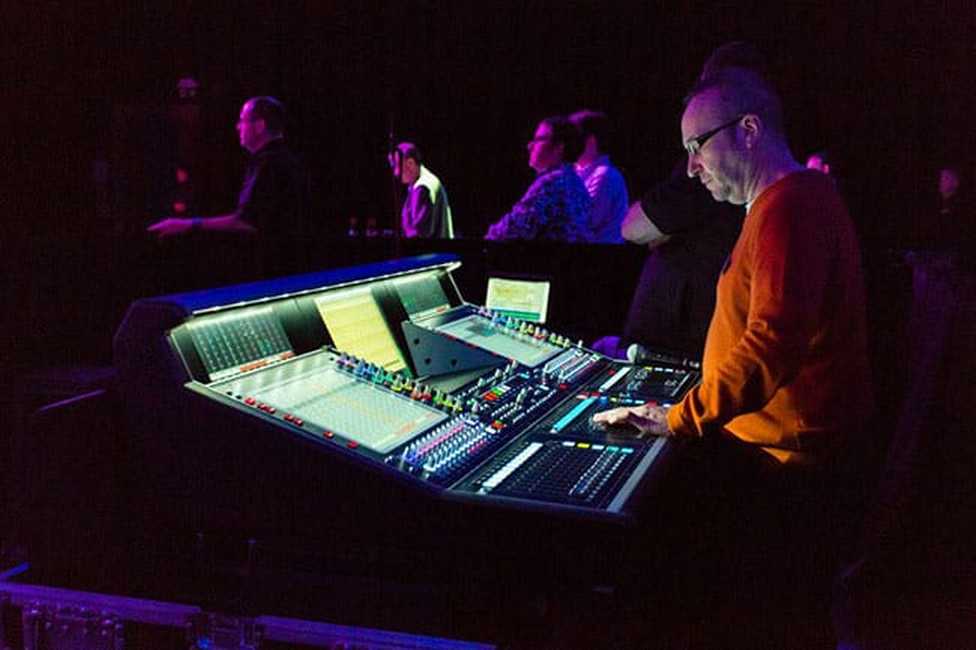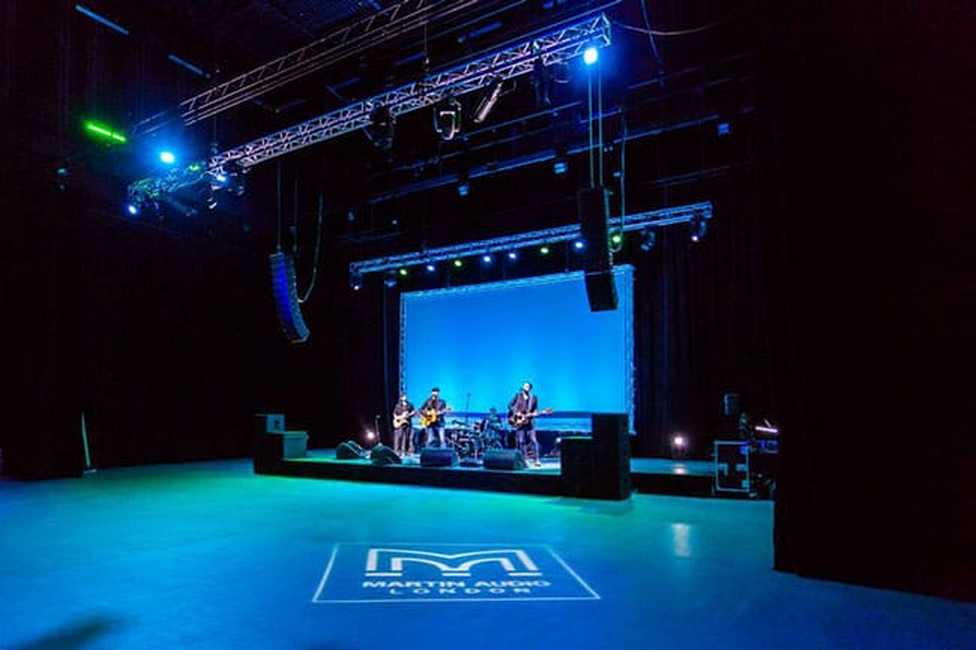FREEDOM OF CHOICE, OR PLAIN OLD COMMON SENSE?
By Simon Honywill
In late February, I was privileged to be behind a very lovely DiGiCo SD5 for the official UK launch of Martin Audio's amazing MLA Mini. The console, on loan from the delightful, but often quite drunk people at DiGiCo, formed a part of possibly the finest small sound system I have yet had the pleasure of mixing on. With DPA mics from the equally lovely Sound Network, it was a quality package from end to end, and the reception from those attending seemed to justify that fact. Some world-weary yet eagle-eared types even made the effort to comment on it, so it must have been good!
But it got me thinking, and the following lines will hopefully express some of those thoughts and maybe raise a few points for debate amongst those who are lucky enough to be able to make choices about the equipment they use, as they go about the task of making things louder.
Now MLA Mini is the youngest in a family of truly radical loudspeaker products. The MLA concept has, in my opinion and that of an increasing number of others, turned the world of pro-audio loudspeakers on its head. It is so far ahead of the competition that it is hard to understand why nobody has thought of it before. It seems that everybody has been so caught up in the frenzy of line array that the next step wasn't even being contemplated by anybody else except the quietly studious Martin Audio R&D department. Whilst the world was busy trying to develop the cleverest way of creating the perfect loudspeaker array, the perfect high frequency device, the slickest rigging, the loudest, most efficient system or in some cases the heaviest cabinets known to man, a couple of boffins in High Wycombe were saying 'hang on, there are significant flaws in this thing called line array – what can we do to overcome them?'
It strikes me as even more strange that in an increasingly regulated and litigious world, designing and building something that just goes louder and further than everything else is ultimately counter-productive. If you put that in a field and turn it on, you're much more likely to upset people, let's face it. In a sensible world, an 'intelligent' system that allows control of the output to maximise the audience experience yet actually reduce levels in the areas where sound is not required would surely be the obvious choice. The fact that such a system exists, and happens to sound awesome, is reason to celebrate. But the number of systems out there is legion, and many of them are very good (and to maintain the balance of things, many of them are not), so what actually is it that brings a person to decide that a particular design, a particular concept or most intriguingly a particular sound is the one for them? When does common sense stand aside and audio blindness take over?
It is incredibly difficult to 'quantify' what makes one person prefer the sound of one system versus another. I would suggest however that there are some inescapable links to other areas of an individual's life, and it's worth pondering those for a moment.
Pretty much any sound engineer you meet will have some kind of story about his or her love of music leading them into a career in sound. Many, like me, are 'failed' rock stars, although I prefer to think of it as the music industry having missed a great opportunity...ho hum. And then there are those who just love music, whether players or not. Perhaps just as important is ones exposure to music, particularly in formative early life and indeed in the early stages of a career. And inextricably tied to this is how this exposure was experienced – what did you listen to, where did you listen? Of course everybody hears a myriad of different pieces of music on myriad different sound systems, but as with many things there will be a trend towards one or two particular situations where there is some contingent that pushes a few buttons deep inside. My own experiences are concentrated into my time at boarding school and shortly afterwards where music formed the very core of everything my friends and I did. At school we would gather in each other's rooms, or wherever there was a turntable or cassette (of course), amp and speakers (usually Amstrad, Leak if we were lucky!) and if there wasn't we would do a quick raid on the school cinema system and indulge ourselves in whatever happened to be close at hand. One particular favourite system of mine belonged to a friend – now an architect – and was made by a Russian or Finnish company called Rigonda. There was something uniquely warm and fat about it – I can still hear it now. At home it was an enormous Dynatron radiogram – not quite the same as the Rigonda but memorable just the same. You'd spend a fortune on plug-ins these days trying to reproduce the same sound and never quite get there.
I believe that the kind of music you listen to also influences the way you listen and therefore mix as a pro. You won't be surprised when I tell you that my youth was filled with 70's rock – my first album was a second hand Led Zeppelin 3 – and as time went by the more outrageously complex the music the better. But in amongst the 17/9 time signatures and bonkers key changes was some classical music too, triggered by the use of Strauss' 'Sunrise' from Also Spracht Zarathustra as the theme to the Apollo moon landings. I was fascinated by the drama of it, and I still hear it now as the occasional opener to Raymond Gubbay's Classical Spectacular. It was serendipity for sure, as my early experiences at front of house involved endless classical summer concerts with R G Jones in the early 80's – I learnt how to mix with classical music, and it must be the most influential aspect of how I hear a sound system today.
And that brings me neatly to what floats my boat, and hopefully might make you think about what floats yours. Let's first just say this – most modern line array systems are very good, compared to what went before. As with anything, once you start to get used to it and analyse it in depth, then it can start to look slightly less fantastic, and any curious mind will begin the process of how it can be improved upon. Hindsight being hindsight, I reckon that everybody has been so caught up with how much farther a line array can throw, and how much more convenient they are, that fewer and fewer remember what it was like to mix on a great point source system, and what it was about them that could be great. Without doubt I would say that the results I heard on a Synco STS rig from Ampco Pro-Rent in Holland were better than (almost) any line array, but it was huge, a pain to hang and set-up took ages, even in the hands of the mighty Hugo Scholten.
What made it great was the one thing that line arrays have taken away – incoherence. A sharp intake of breath – we're talking about the holy grail here...A technically perfect line array system strives to deliver a coherent output at the speaker grille, which is admirable, but when it's several feet tall and several more feet up in the air, what happens to that wavefront in between the grille and the listener's ears is anybody's guess, and in one given position in an auditorium the number of components one is hearing compared to another can vary massively – leading to quite astounding variations in frequency response – variations that engineers are powerless to do much about and therefore don the audio blinkers. Next time you're working on a line array system, take a few measurements at various positions through the venue and overlay the curves, and then talk to me about consistent coverage.
A good point source system would deliver a wavefront that was riddled with incoherence due to interfering components within individual cabinets spaced too far apart to give coherent summation, but, design dependant, the phase shifts between those components could be quite subtle (I refer to the co-entrant STS system again). What this achieved was a sense of depth in the mix that you would never get from a line array – it's much like the natural way we hear things, such as an orchestra, where subtle phase shifts are absolutely vital to the overall sound. Next time you mix on a line array, try adding a few short delays to your inputs here and there, and hear what happens to the depth of field.
Line arrays sound two-dimensional – there, I said it.
So that brings me to MLA, and its flourishing family of smaller siblings. It's not a line array – it might look like one, and uses the same principles to achieve some of its objectives, but the wavefront it generates is anything but coherent. And I believe that this is one of the reasons why I like the way it sounds so much that I never want to hear another line array in my life – it's actually more natural. Coupled with a musicality across the spectrum that is hard to find in any other system (maybe it sounds a bit like a Rigonda radiogram), the platform it delivers for a mix engineer is second to none.
I expect sub-bass cabinets to sound like music too, and there aren't many that do (I hate the whole festival pre-occupation with creating a kick drum sound that knocks everybody over – it's important yes, but I want it to sound like music, not quarrying, especially when there are voices and acoustic guitars involved). Most subs make a noise that is akin to the kind of noises you hear underwater when there's an earthquake going on – loads of energy but not much in the way of notes. All of the sub-bass cabinets in the MLA range are extremely musical, and enable a mix engineer to actually create a mix that is both powerful and musical at the same time. If a weapon is what you really want, then the MLX is more than capable of doing some serious damage.
But where does this all leave us? There is a world full of systems out there that have been designed to go louder and throw further than the last one, many of which do it very well. But in that world, it's only in Kazakhstan that this will benefit you in the end, as I can't imagine they've thought too much about noise regulation just yet. In Europe however, certainly in Japan, the US and many other more populous regions, people want us to make less noise – yes, by all means have some fun people, but could you do it quietly please? So, what we really need is a system that pushes all of our buttons, whatever they may be, whilst keeping the neighbours happy. I would suggest that in MLA, we have exactly that, and as for what makes us like it, you can make it sound exactly as you want, wherever you want. Try doing that with something that only comes in brown.
Simon Honywill is Front of House Engineer for Jose Carreras, Katherine Jenkins and Chris Rea, and is an advocate of Martin Audio's MLA.


